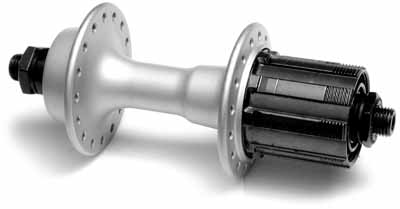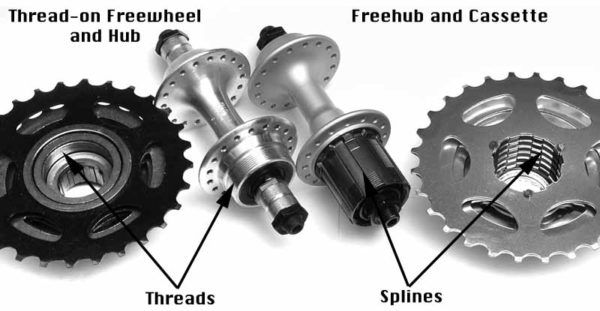If you’ve been using the two terms (freewheel and cassette) interchangeably, don’t worry because you’re not alone. If you don’t know which you have on your bike, you can end up wasting a lot of money due to the error. We’re going to help remove some of the confusion by explaining the difference between freewheel and cassette freehubs.
Freewheels (for Threaded Hubs)
Traditional rear hubs have a standardized set of threads that a freewheel or sprocket cluster can be screwed onto. This meant any brand of freewheel could be mounted on any brand of hub. The extractor splines do not turn when the sprockets are spun backwards.Freewheels come with sprockets bolted together, without possibility of swapping them. Pretty much all bikes made through the late 80s used this system.
Cassettes & Freehubs
Over the past few decades, the cassette replaced the conventional threaded rear hub. This newer style hub works so well that they have replaced the traditional freewheel and have become the new standard for contemporary road bikes. One of the major differences between a freewheel and a freehub is the location of the coasting mechanism
It incorporates the ratchet mechanism into the hub body, so you can replace the sprockets only, rather than the ratchet mechanism. Unlike the freewheel and threaded hub system, the lockring splines will turn with sprockets when spun backwards. Additionally, many freehubs will have a distinctive bulge on the right end of the hub barrel.

Whereas freewheels come with sprockets bolted together, without possibility of swapping them, cassettes come with loose sprockets that have spacing between them. Some cassettes do come with sprockets held together with bolts or rivets, but these are just for easier mounting – they can be removed without affecting functionality, so that individual sprockets can be swapped.
Which One Do I Have?
If you’re still not sure what you have on your bike, it’s possible to ID it by how it looks. Freewheel axles are typically recessed slightly into the axle. Cassettes are typically flush with the face of the gears, and you can see the splines, appearing as the rays of the sun around the perimeter. Freewheel axles may also show splines, but not as many as a cassette, and are recessed into the body deeper, around the axle itself, not the gear like a cassette.
Not all Freehubs have this bulge, but whenever you see it, you can be sure that it is, in fact, a cassette Freehub.
Buying and Changing Sprockets
Attention should be paid to this when buying and changing sprockets, so that the right ones are used. Freewheel is screwed onto the rear hub, while cassette is just slid onto the hub splines, held in place with a special lockring. The very end of the (rear) hub differs for each type, so it is easy to identify the standard, even before removing sprockets.
